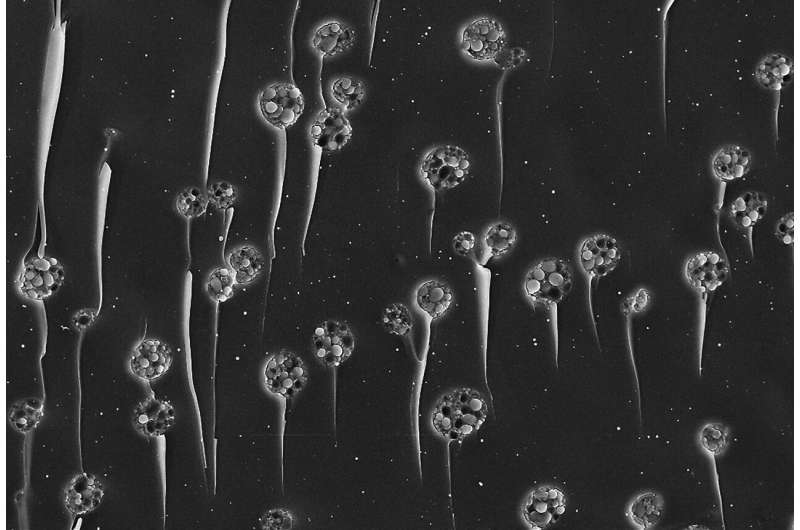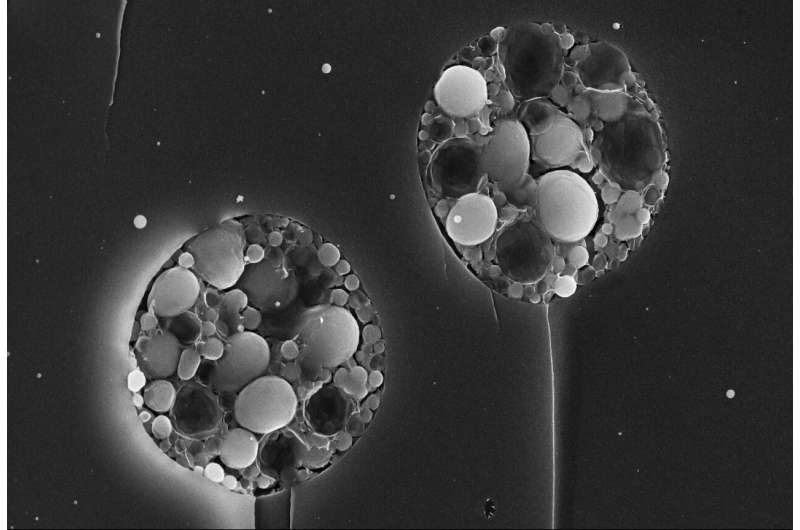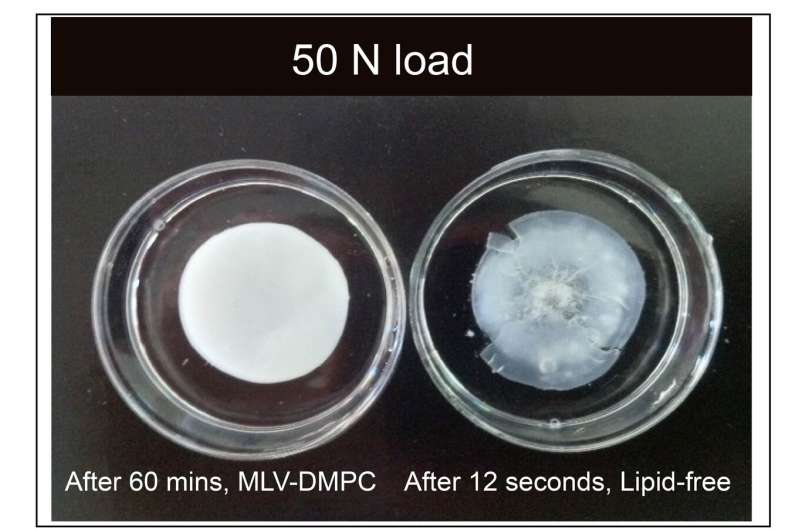October 16, 2020 report
Lipid-based boundary-lubricated hydrogels found to be slipperier than those based on water

A team of researchers at the Weizmann Institute of Science in Israel has developed a lipid-based boundary-lubricated hydrogel that is slipperier than water-based hydrogels. In their paper published in the journal Science, the group describes their inspiration for the new kind of hydrogel and how well it performed when tested. Tannin Schmidt with the University of Connecticut Health Center's School of Dental Medicine has published a Perspective piece in the same journal issue outlining the work by the team on this new effort and suggesting possible uses for it.
Hydrogels are used in a wide variety of applications, including biomedical (including dental), engineering and application-specific sensors (such as an anoscope, used for anal exams). One of their main draws is their slipperiness, which reduces friction between parts—friction reduction reduces wear and tear. And as Schmidt notes, most hydrogels are made slippery by fluids that are trapped in a base material. In this new effort, the researchers started with the knowledge that the lubricant produced by animals to prevent friction between joints (residing in cartilage) is lipid-based. It allows most people to live for multiple decades without joint degradation. Inspired by nature's design, the researchers sought to replicate such lubricants and also to replicate the mechanism that keeps the slipperiness in place. In animals, the lubricant must be constantly replaced as it loses its effectiveness.

The mechanism designed by the team in Israel involved incorporating small amounts of phosphatidylcholine lipids into a water-based hydrogel, where the lipids migrate without assistance to the outer surface of the hydrogel—making only the surface more slippery. The lipids continue to migrate to the outer surface as those on the surface are worn out or lost, thus providing a long-lasting lubricant.

When the researchers tested their lipid-based hydrogel against water-based hydrogels, they found it to be much slipperier by 100 percent. That resulted in less wear on biomedical applications that required reduced friction. They also found that their hydrogel would maintain its special features even after being dried and rehydrated. Schmidt suggests that the new hydrogel could be used in a wide variety of medical and biological applications.
More information: Cartilage-inspired, lipid-based boundary-lubricated hydrogels, Science (2020). DOI: 10.1126/science.aay8276
Journal information: Science
© 2020 Science X Network





















